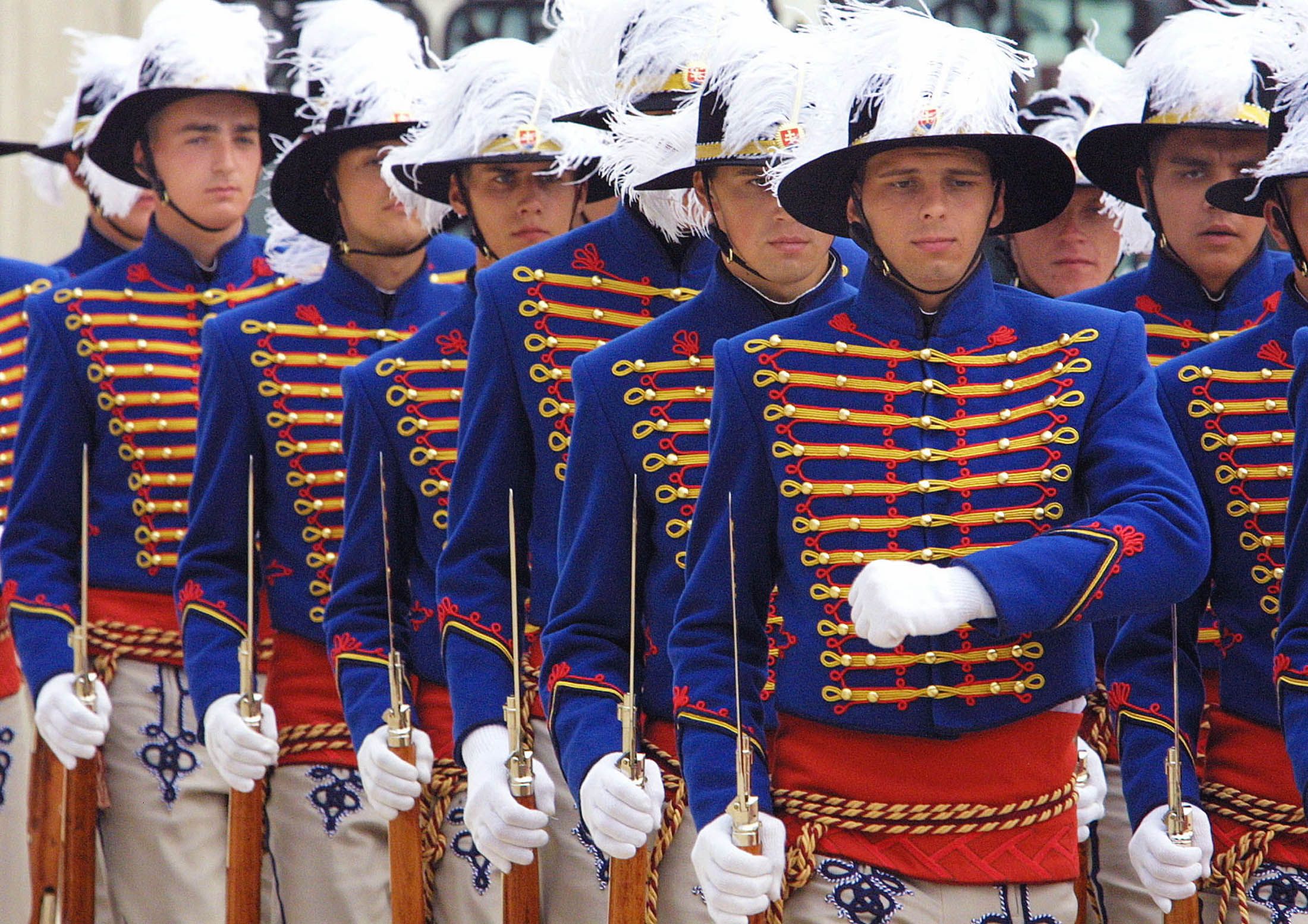Slovakia’s New Security and Defence Strategies

Strenuous Strategy Definition
On 27 January, parliament adopted the security strategy developed by the government of Igor Matovič, and on the following day, the defence strategy. The 16-year break in strategy revisions was related to disputes over Russia’s role in Slovak foreign policy. Although in 2017 the government of Robert Fico approved a new security strategy, due to opposition from the coalition pro-Russia Slovak National Party, it was not discussed in parliament. After a right-wing coalition came to power in March last year, it became possible to adapt the security policy to the current challenges. To avoid once again long-term obsolescence of these documents, the government recommended that they be reviewed every seven years at most.
The adoption of the security strategy was the fulfilment of the government’s programme from April 2020. It also demonstrated coalition unity, tarnished by disputes over, among others, counteracting the pandemic. The formulation of the security strategy was the responsibility of the Minister of Foreign and European Affairs Ivan Korčok (connected to the Freedom and Solidarity party), while the defence strategy was the responsibility of Defence Minister Jaro Naď (of Ordinary People and Independent Personalities).
New and Old challenges
In the strategies, the government points to Russia as a challenge to Euro-Atlantic security. It not only describes the occupation of Crimea as aggression but also sees a threat in Russian propaganda and disinformation. At the same time, Slovakia expresses interest in developing good relations with Russia as an important partner in solving international challenges. Nevertheless, the content of the strategy shows a more negative assessment of Russian policy than the position taken by previous governments. The evolution of this approach is also confirmed by the more explicit defence by the Matovič government of the sanctions imposed by the EU on Russia and the criticism of the Nord Stream 2 gas pipeline.
Slovakia also sees China as a security challenge, regardless of Matovič’s presence at the 17+1 summit in February this year or, for example, the intention to increase exports of Slovak meat to this country. The strategies recall the EU’s definition of China as a “strategic rival” and notes violations of human rights. The critical approach to China and the state of Slovak-American relations led to an October 2020 agreement with the U.S. on security of 5G networks. This policy course differs from the approach of the previous cabinet of Peter Pellegrini, which preached neutrality on the 5G issue—not excluding cooperation with Chinese firms, namely Huawei.
The newly revised strategies link migration and corruption with national security, which dominated the domestic public debate before the pandemic. Although the documents recognise Slovakia as a “transit country” for migration, they point to the risk of social tensions and increased pressure of extremist ideologies as a possible consequence of insufficient integration of migrants. In turn, the emphasis on the need to fight corruption stems from campaign promises and is an important issue, especially after the murder of journalist Ján Kuciak in 2018 and the collapse of the government in Slovakia, as is the aim to regain lost credibility in the EU. A European Commission report on the rule of law issued in September 2020 points to a lack of anti-corruption measures taken by the Slovak authorities.
Increasing the Security Potential
Slovakia is a country with limited resources but attaches great importance to allied guarantees of security and multilateralism. The strategies focus on the collective mechanisms of NATO and the EU, and call for close cooperation between them. The nuclear arsenal of NATO allies is viewed in the documents as a key deterrent. At the same time, they emphasise the need to control arms and limit the proliferation of weapons of mass destruction. Therefore, the Slovak government in January reacted positively to the agreement between the U.S. and Russia on the extension of the New Strategic Arms Reduction Treaty (New START).
In terms of cooperation within the Alliance, Slovakia points to the need for further joint military and anti-terrorist exercises and greater involvement in foreign missions. That is why Matovič’s cabinet plans, for example, to increase the size of the Slovak contingent in the EUFOR Althea mission in Bosnia and Herzegovina from 41 to 60 troops. In the EU context, the strategies mention The European Defence Fund, the Coordinated Annual Review on Defence (CARD), and the PESCO mechanism (Slovakia participates in six out of 47 projects), among others. Slovakia does not want U.S. forces to be stationed on its territory, although its strategies include hosting allied forces and the American military presence in Europe.
The strategies pay little attention to the regional dimension of security cooperation. There are no references to, for example, the Bucharest Nine, and the Visegrad Group—alongside the Slavkov Triangle—is mentioned only in the general context of cooperation. They link the support for European integration of the Western Balkans, the traditional direction in Slovakia’s foreign policy, with the country’s security.
To strengthen its credibility in NATO by fulfilling the commitments made at the Newport summit in 2014, the new strategies set the defence spending target at 2% of GDP by 2024. Slovakia unexpectedly met it early and for the first time in 2020, but this was because of the decline in GDP and exceptional measures taken to combat the COVID-19 pandemic. Funds allocated to armament and equipment should serve the modernisation of the heavy mechanised brigade and communications and IT systems. These areas are also intended to support the further development of Slovakia’s defence industry. Modernisation of the armed forces takes place with the participation of third countries, such as the purchase of 14 multi-role F-16 planes approved by the Pellegrini government or the purchase announced in January this year of 17 3D radar stations from Israel.
Conclusions and Perspectives
The new strategies indicate a multitude of security challenges but propose only general measures to counter them. Contrary to the 2005 versions, the new strategies specifically address the threat from Russia and China, as does the policy of the Matovič government, which, compared to previous governments, confirms the more critical assessment. This stance was expressed before the adoption of the strategy, for example, by excluding Huawei from participation in Slovakia’s 5G network, leaving Hungary as the only V4 country open to cooperation with China in this area.
The clear grounding of Slovak security policy in multilateral cooperation, and mainly within NATO and the EU, demonstrates Slovakia’s willingness to deepen relations with its allies. By further increasing defence spending or ensuring greater transparency in the functioning of state institutions, the Matovič government aims to strengthen Slovakia’s credibility. Although its actions within the EU are treated in a general way and ignore such issues as strategic autonomy, Slovakia aims to compensate for its defence potential through EU-level cooperation. This approach results from the lack of interest in a permanent U.S. troop presence on its territory. At the same time, Matovič’s cabinet supports American forces in other allied countries—the Fico government was reluctant to create an anti-missile shield in Poland and Czechia. Slovakia, like Poland, responded positively to the decision of the new U.S. administration to suspend the reduction of the number of American soldiers in Germany. Moreover, the desire to strengthen relations between Slovakia and the U.S. is indicated, on the one hand, by the modernisation of its air force with American participation, and on the other, by declarations like the bilateral memorandum on the safe destruction of conventional weapons, signed in February.
Despite the limited coverage of regional cooperation aspects in the new strategies, Slovakia will continue its activities in the Visegrad Group in the field of security. This is achieved, among others, by participation in the Visegrad battlegroup (scheduled to go on standby, a more active phase, in 2023) or the first V4 joint purchase of weapons (300,000 rounds of training ammunition, obtained through the NATO Support and Procurement Agency), announced in February. That the strategies equate the V4 with the Slavkov Triangle, whose security activities are marginal, may reveal Slovakia’s ambitions to expand the competences of the latter, especially in the context of combating the pandemic.


